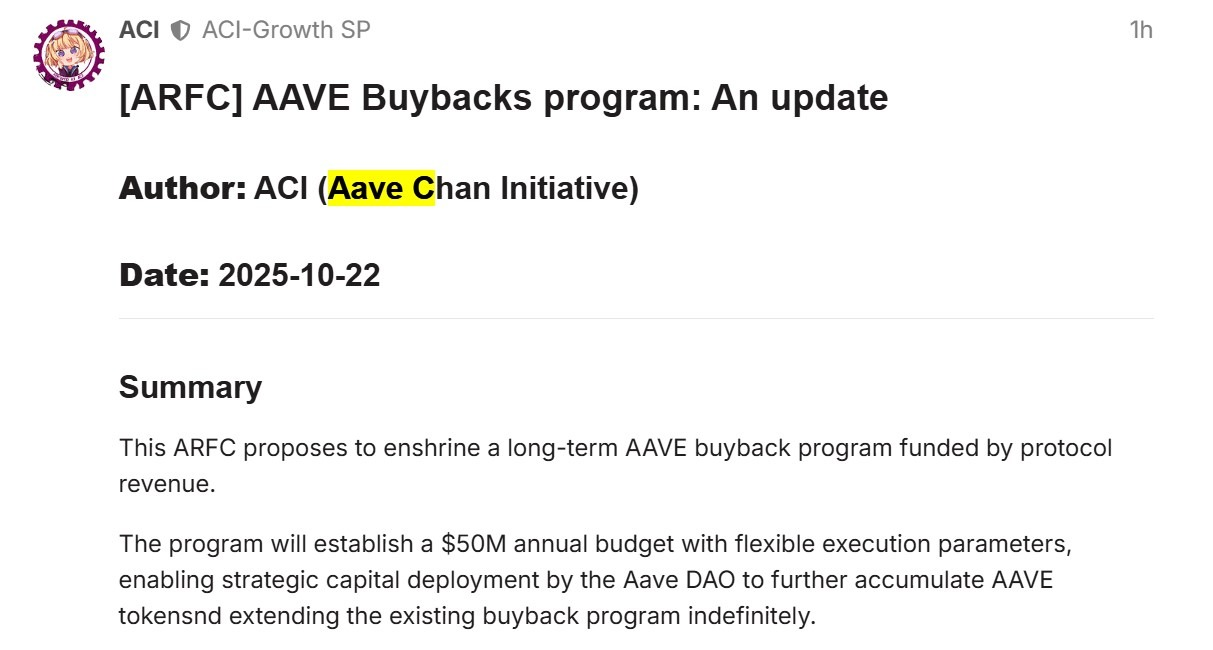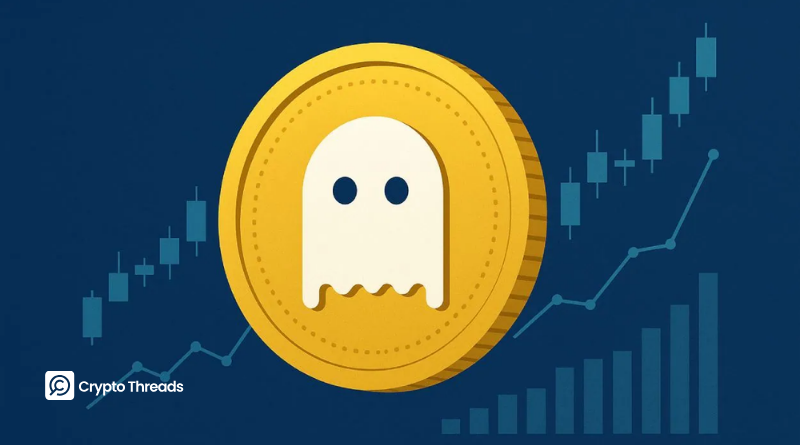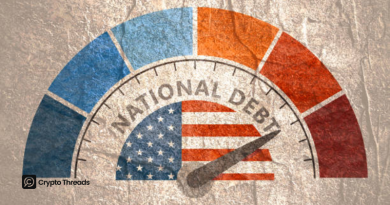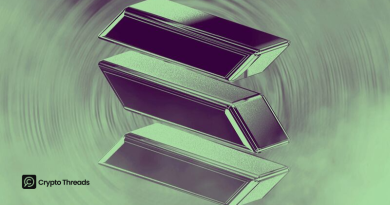Aave DAO Proposes $50 Million Annual Token Buyback Funded by DeFi Revenues
- Aave DAO proposes a permanent $50 million annual buyback program using protocol-generated revenue.
- Weekly AAVE token repurchases between $250K and $1.75M would be managed by the Aave Finance Committee (AFC) and TokenLogic.
- The program would institutionalize buybacks as a long-term capital strategy, not a one-time market action.
- Builds on April’s $4M buyback, which boosted AAVE’s price by 13%.
- Comes ahead of the Aave v4 upgrade, set to reshape the protocol’s technical and economic architecture.
The Aave DAO has unveiled a bold proposal to establish a long-term, revenue-backed buyback program that could see up to $50 million worth of AAVE tokens repurchased annually using proceeds from its decentralized finance (DeFi) operations.
Introduced by the Aave Chan Initiative (ACI) on Wednesday, the plan seeks to make token buybacks a permanent component of Aave’s governance and treasury strategy. Under the proposal, the Aave Finance Committee (AFC) and TokenLogic would execute weekly purchases of $250,000 to $1.75 million worth of AAVE, depending on factors such as market liquidity, volatility, and protocol revenues.
If approved, the plan will undergo the Aave Request for Comment (ARFC) stage for public feedback, followed by a Snapshot vote and final onchain governance approval. The move represents a shift from short-term interventions toward a systematic, rule-based approach – turning Aave into an active, self-sustaining capital allocator.
From One-Time Buys to Perpetual Buybacks
The new proposal builds on the success of Aave’s earlier $4 million buyback in April, which triggered a 13% price increase in the AAVE token. A similar initiative last week proposed an immediate $20 million buyback to take advantage of what the DAO viewed as an undervalued token.

Unlike its predecessors, however, the latest plan aims to institutionalize buybacks indefinitely, embedding them within the DAO’s financial framework. By transforming opportunistic buybacks into a recurring treasury function, Aave aligns itself more closely with traditional corporate financial practices, where share repurchases are used to enhance long-term value and manage supply dynamics.
Proponents argue that this approach would also help stabilize the token’s price over time and increase DAO treasury flexibility by recycling protocol revenues into AAVE demand.
Aave’s v4 Upgrade on the Horizon
The proposal coincides with preparations for the Aave v4 upgrade, expected to roll out in Q4 2025. The upcoming milestone will overhaul Aave’s technical and economic infrastructure, introducing a modular “hub-and-spoke” design that supports customizable lending markets while pooling liquidity through centralized “hubs.”
This design is intended to improve scalability, efficiency, and risk management, with dynamic risk configurations reducing the likelihood of liquidation cascades in multi-asset portfolios.
By combining the upcoming v4’s architectural flexibility with a financially disciplined governance model, Aave aims to evolve from a lending protocol into a fully integrated DeFi ecosystem capable of sustaining itself through recurring revenue streams and community-directed capital allocation.
Final Thought
If approved, Aave’s $50 million annual buyback program would mark one of the most ambitious financial experiments in DeFi governance – effectively turning the DAO into a self-managed asset allocator. Together with the upcoming v4 upgrade, the initiative signals Aave’s strategic transition toward a more mature, profit-driven, and governance-led DeFi model, blending traditional finance discipline with decentralized innovation.



